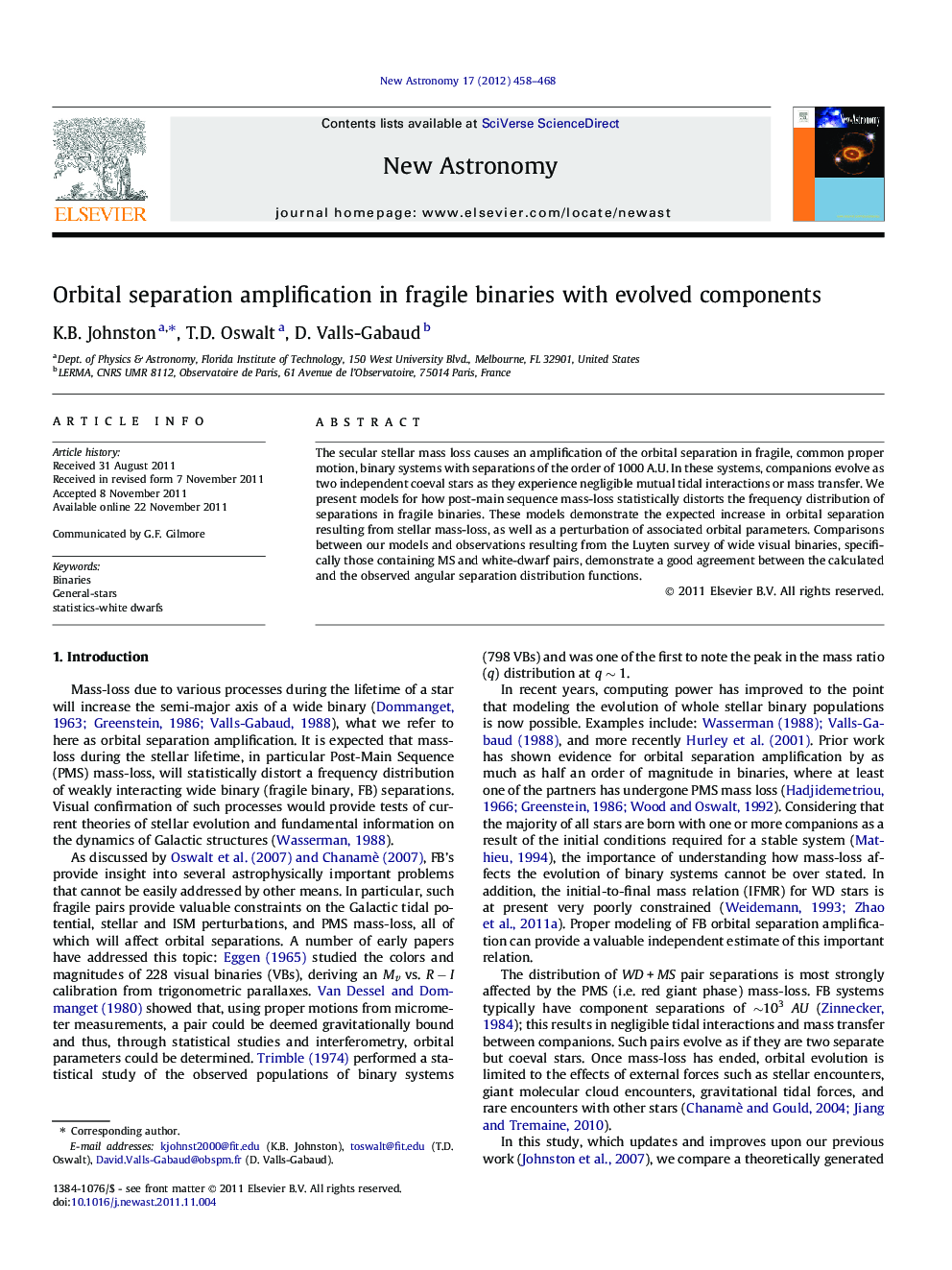| Article ID | Journal | Published Year | Pages | File Type |
|---|---|---|---|---|
| 1779292 | New Astronomy | 2012 | 11 Pages |
The secular stellar mass loss causes an amplification of the orbital separation in fragile, common proper motion, binary systems with separations of the order of 1000 A.U. In these systems, companions evolve as two independent coeval stars as they experience negligible mutual tidal interactions or mass transfer. We present models for how post-main sequence mass-loss statistically distorts the frequency distribution of separations in fragile binaries. These models demonstrate the expected increase in orbital separation resulting from stellar mass-loss, as well as a perturbation of associated orbital parameters. Comparisons between our models and observations resulting from the Luyten survey of wide visual binaries, specifically those containing MS and white-dwarf pairs, demonstrate a good agreement between the calculated and the observed angular separation distribution functions.
► We propose theoretical fragile binary properties: separation, q-ratio, and period. ► We generate theoretical distributions of fragile binary populations. ► Theoretical distributions are evolved and compared to observed distributions. ► Resulting comparisons of evolved pairs show similarities. ► Resulting distributions of theoretical fragile binary properties provide insight to observed distributions.
